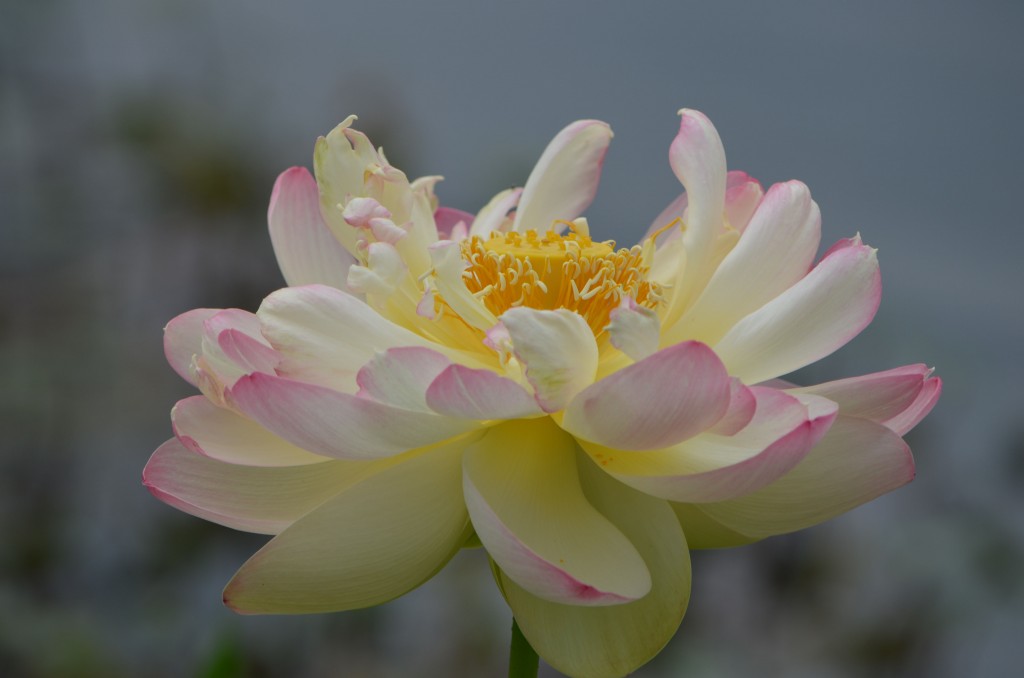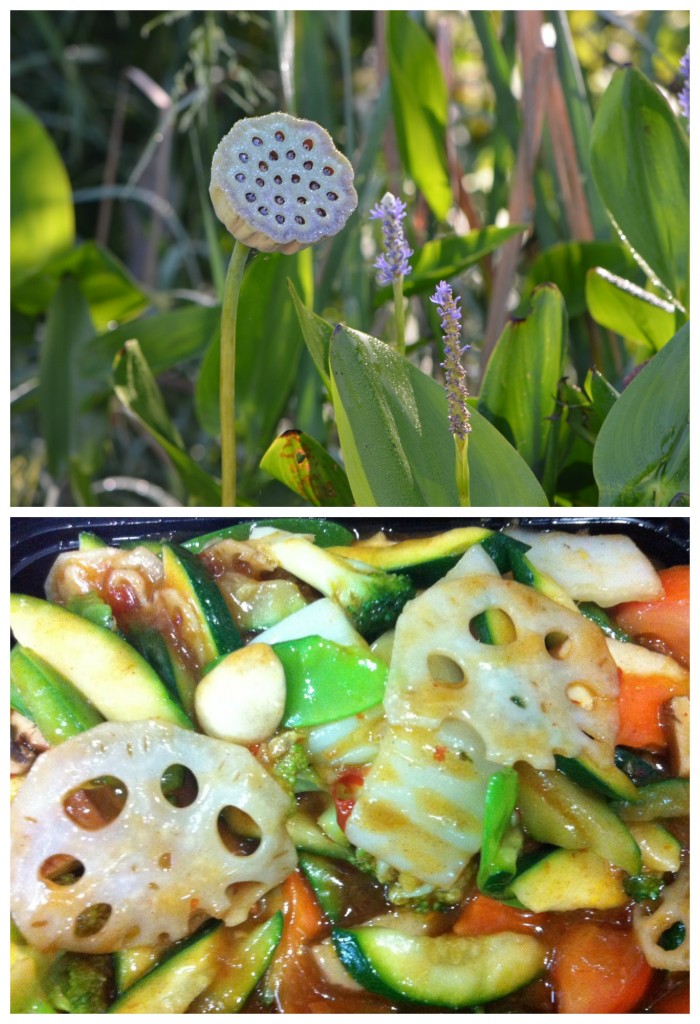Lotus Pods, 2 Ways
by Jonah Holland, PR & Marketing Coordinator, Lewis Ginter Botanical Garden
This past weekend, when I was in New York City, I got to taste a plant I’ve often enjoyed looking at, but never eaten — the lotus. Each May, Lake Sydnor is filled with the white-pink blooms of the famed lotus, Nelumbo nucifera ‘Mrs. Perry D. Slocum.’ It is a beautiful sight to behold.
Imagine my surprise when I ordered Tofu Basil at a dive in a back alleyway in the Financial District, near Wall Street and A La Saigon had cooked beautiful lotus pods into a lovely stir fry with house-baked tofu, fresh basil, snow peas, zucchini, carrots and cabbage. The taste? Fabulous! The texture, if you imagine a very tender water chestnut, you’ll have the idea.
See the resemblance? Granted the stir-fry lotus pod likely wasn’t the exact same variety of Nelumbo nucifera (sacred lotus minus the ‘Mrs. Perry D. Slocum’) that is used in most of Asian cuisine and my Vietnamese Tofu Basil. Either way, I’m not sure I’ll ever look at my favorite ‘Mrs. Perry D. Slocum’ the same way again.
Next up on my culinary-botanical adventure: lotus seeds — both immature (watch, you crack them on your head apparently) and mature (have to peel them before eating). After all, who knew that lotus seeds are considered the “Cajun Peanuts” of the South, or that lotus seeds of American Lotus, Nelumbo lutea, were a dietary staple of the Native Americans of south Louisiana?

